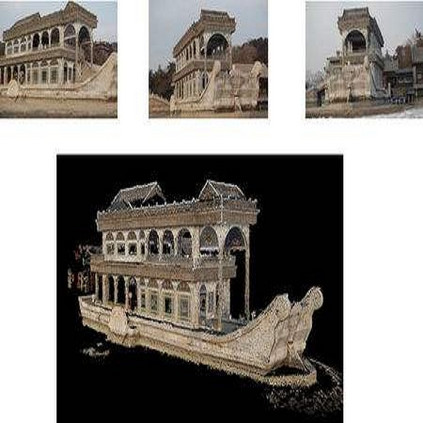Although PIFu-based 3D human reconstruction methods are popular, the quality of recovered details is still unsatisfactory. In a sparse (e.g., 3 RGBD sensors) capture setting, the depth noise is typically amplified in the PIFu representation, resulting in flat facial surfaces and geometry-fallible bodies. In this paper, we propose a novel geometry-aware two-scale PIFu for 3D human reconstruction from sparse, noisy inputs. Our key idea is to exploit the complementary properties of depth denoising and 3D reconstruction, for learning a two-scale PIFu representation to reconstruct high-frequency facial details and consistent bodies separately. To this end, we first formulate depth denoising and 3D reconstruction as a multi-task learning problem. The depth denoising process enriches the local geometry information of the reconstruction features, while the reconstruction process enhances depth denoising with global topology information. We then propose to learn the two-scale PIFu representation using two MLPs based on the denoised depth and geometry-aware features. Extensive experiments demonstrate the effectiveness of our approach in reconstructing facial details and bodies of different poses and its superiority over state-of-the-art methods.
翻译:虽然基于PIFu的3D人类重建方法很受欢迎,但回收细节的质量仍然不尽人意。在一个稀薄(如3 RGBD传感器)的捕获环境中,深度噪音通常在PIFu代表处放大,导致面部表面平坦和几何失密体。在本文件中,我们建议从稀疏、吵闹的投入中为3D人类重建采用新型几何觉觉觉觉觉双尺寸的PIFu双尺寸的PIFu。我们的关键想法是利用深度分解和3D重建的互补性,学习双尺寸的PIFu代表,以分别重建高频面部和连续体。为此目的,我们首先将深度分解和3D重建作为多任务学习问题。深度分解过程丰富了重建特点的当地几何学信息,同时重建进程则用全球地形信息的深度去分解。我们然后提议利用基于分解深度和几何觉特征的2 MLPs来学习两种尺度的PIFu代表。我们的方法在重建面部细节方面的效力以及超越了不同的等级方面进行广泛的实验。




